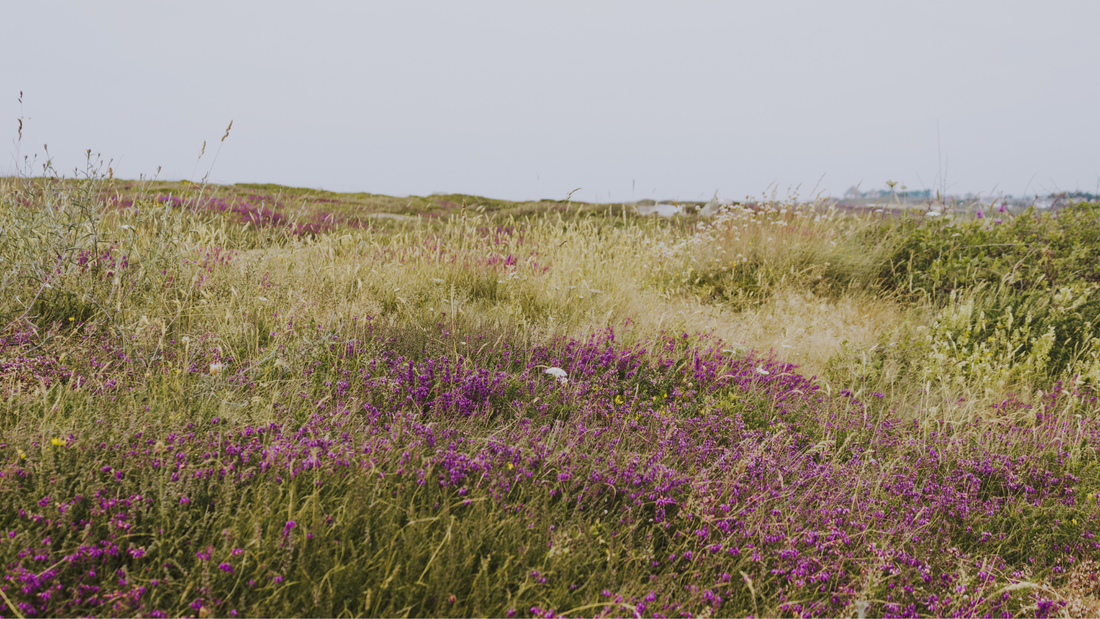
In recent years, there has been a growing interest in sustainable and environmentally friendly gardening practices. One of the most exciting and beneficial trends in this regard is meadowscaping. This practices involves turning your lawn into meadow.
Unlike traditional manicured lawns, meadowscaping aims to recreate the beauty and functionality of natural meadows, with a plethora of native plants and wildflowers. Meadowscaping comes with numerous benefits, and thanks to recent legislation, now no Maryland HOAs can outlaw backyard meadows due to weed ordinances. Woohoo!
Why You Should Turn Your Lawn into Meadow With Meadowscaping Design in Maryland
Biodiversity Boost
One of the most significant advantages of meadowscaping is its ability to enhance biodiversity. Traditional lawns offer limited habitat and food sources for wildlife, but meadowscapes attract a diverse range of insects, birds, and small mammals. Native plants and wildflowers provide nectar, pollen, and seeds for butterflies, bees, and other pollinators. This biodiversity can help support local ecosystems and contribute to the conservation of native species.

Water Conservation
Meadowscaping is inherently water-efficient. Once established, meadows require significantly less water than manicured lawns, making them ideal for regions with water scarcity or drought-prone areas. The deep root systems of native plants help retain moisture in the soil, reducing the need for frequent watering. By choosing to meadowscape, gardeners can make a positive impact on water conservation efforts.
Low Maintenance
Traditional lawns demand a substantial amount of time and effort to maintain their pristine appearance. On the other hand, meadowscaping requires minimal upkeep once established. Native plants have adapted to the local climate and soil conditions, making them hardy and resilient. Without the need for mowing and frequent watering, gardeners can spend more time enjoying their natural landscape and less time on laborious maintenance tasks.
Improved Soil Health
The use of native plants in meadowscaping helps improve soil health and structure. Native species have co-evolved with the local soil, and their root systems foster healthy microbial activity, which enhances soil fertility and drainage. The presence of wildflowers and grasses also prevents soil erosion, reducing the risk of sediment runoff into waterways.
Clover, for instance, is fantastic at restoring nitrogen levels in soil. Buckwheat is another that provides tons of nectar to pollinators while restoring soil. Because they’re low maintenance, you won’t have to do much to facilitate their growth.
Carbon Sequestration
In the face of climate change, every effort to sequester carbon is essential. Meadowscaping can play a role in carbon sequestration by capturing and storing carbon dioxide from the atmosphere in plant tissues and the soil. Native plants, particularly perennial grasses, are efficient carbon sinks, helping to mitigate the effects of greenhouse gas emissions.
Budget Saving Landscaping
Not only do meadows replace grass that you have to pay someone to mow, but they’re also very inexpensive to make! For starters, you can rope off a section of your yard and let it grow to see what naturally comes up. You’ll be surprised to see how many buttercups and clover have been waiting for this chance to bloom!
If you’d like to start fresh, you can sod cut your lawn or till it under and sow wildflower seed mixes and clover. In a season or two, the roots will crowd out other weeds and you’ll be left with a gorgeous meadow you and your wildlife will enjoy.
Aesthetically Pleasing
Meadowscaping is far from unkempt or messy; it offers a different kind of beauty. The varied colors, textures, and heights of native plants create a captivating and ever-changing tapestry throughout the seasons. Meadows are alive with movement and activity, from the gentle sway of grasses in the breeze to the vibrant dance of butterflies and bees among the flowers. This natural beauty has a unique appeal that can be both relaxing and invigorating.
Habitat Restoration
Meadowscaping can play a vital role in habitat restoration efforts. By planting native species, gardeners and landowners can help recreate lost or degraded habitats for wildlife. Meadows act as corridors, connecting fragmented habitats and allowing species to move and thrive in more extensive areas.

Reducing Chemical Use
Traditional lawns often rely on synthetic fertilizers and pesticides to maintain their appearance and control weeds. These chemicals can have harmful effects on the environment and human health. Meadowscaping minimizes the need for chemical use since native plants are better adapted to local conditions and are less prone to pest infestations.
Educational Opportunities
Meadowscaping provides valuable educational opportunities for both adults and children. Observing the diverse plant and animal life in a meadow can foster an appreciation for nature and promote a deeper understanding of ecosystems and their interconnections. It offers a chance to reconnect with the natural world and instill a sense of environmental stewardship in future generations.
Meadowscaping offers a host of benefits that go beyond mere aesthetics. From supporting biodiversity and water conservation to promoting soil health and carbon sequestration, this natural landscaping approach presents a holistic and sustainable solution for homeowners in Maryland—and the state as a whole! By embracing meadowscaping, we can create thriving, ecologically rich landscapes that not only enhance our surroundings but also contribute to the preservation of our delicate ecosystems.

